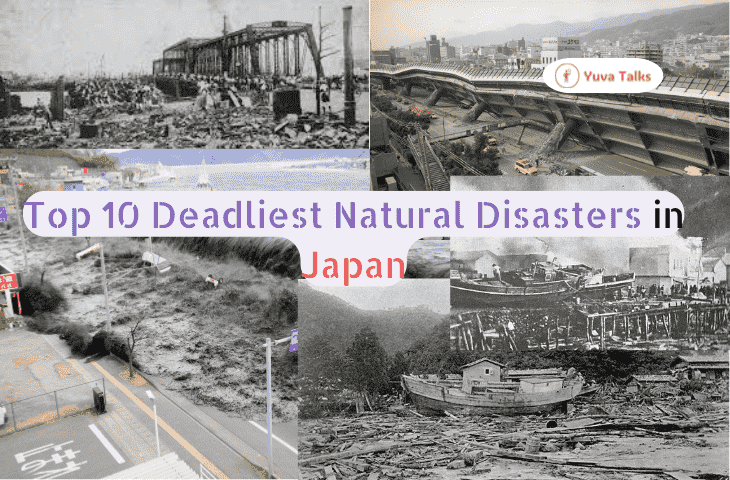Explore Japan’s rich history through a compilation of the top 10 most devastating natural disasters that have struck the nation. Dive into the country’s most catastrophic events, discovering the world’s deadliest natural disasters while examining the common natural calamities that have affected Japan. Uncover the details of the worst natural disaster in Japan’s history through a comprehensive list of significant events that have shaped the nation.
Situated in a geographical location prone to various natural calamities, Japan faces frequent occurrences of powerful earthquakes, massive tsunamis, severe typhoons, and volcanic eruptions. By studying the most significant natural disasters Japan has endured, we can appreciate the remarkable resilience of its people and their ingenuity in tackling the challenges posed by nature.
This article outlines Japan’s ten most lethal natural disasters, detailing their locations, dates, and estimated fatalities, highlighting the significant impact these events have had on the nation.
Top 10 Deadliest Natural Disasters in Japan
The table given below lists the Top 10 worst natural disasters in Japan with their location, date and estimated death toll. #JapanDisasters
| Top 10 Worst Natural Disasters in Japan | ||||
| Rank | Disaster Type | Location | Date | Death Toll |
| 1 | Great Kantō Earthquake | Tokyo and Yokohama | 1923-09-01 | Over 105,000 |
| 2 | 2011 Tōhoku Earthquake and Tsunami | Tōhoku region | 2011-03-11 | Over 15,899 |
| 3 | 1995 Great Hanshin Earthquake | Kobe and surrounding areas | 1995-01-17 | 6,434 |
| 4 | 1896 Sanriku Tsunami | Sanriku coast | 1896-06-15 | 22,000 |
| 5 | 1933 Sanriku Tsunami | Sanriku coast | 1933-03-03 | Approximately 3,000 |
| 6 | Mount Unzen Eruption and Tsunami | Shimabara Peninsula | 1792 | About 15,000 |
| 7 | 1888 Mount Bandai Eruption | Fukushima Prefecture | 1888-07-15 | Approximately 477 |
| 8 | Typhoon Ida | Kantō region | 1958-09-26 | 1,269 |
| 9 | 1944 Tōnankai Earthquake | Pacific Ocean, south of Japan | 1944-12-07 | Over 1,000 |
| 10 | 1707 Hōei Earthquake | Honshu | 1707-10-28 | 5,000 – 20,000 |
Great Kantō Earthquake (1923)
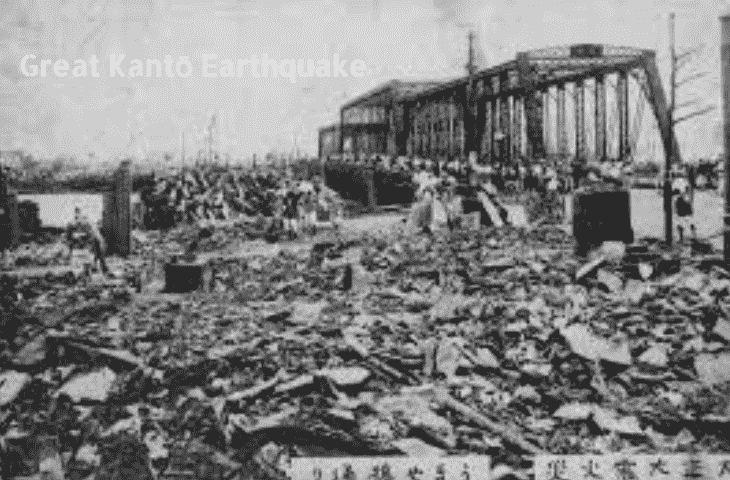
In 1923, a massive earthquake struck Tokyo and Yokohama, reducing buildings to rubble and igniting widespread fires. Imagine your favorite places vanishing in an instant. Tragically, more than 105,000 lives were lost. This heartbreaking event also highlighted the resilience of people as they united to rebuild their communities. #GreatKantoEarthquake.
Also Read:- Top 10 Most Expensive Paintings in the World 2024
2011 Tōhoku Earthquake and Tsunami

About a decade ago, Japan experienced a devastating earthquake that triggered a colossal tsunami, obliterating homes and uprooting families in the Tōhoku region. Nearly 16,000 individuals perished. This disaster serves as a powerful reminder of nature’s might and the importance of coming together in difficult times. #TohokuEarthquake
1995 Great Hanshin Earthquake
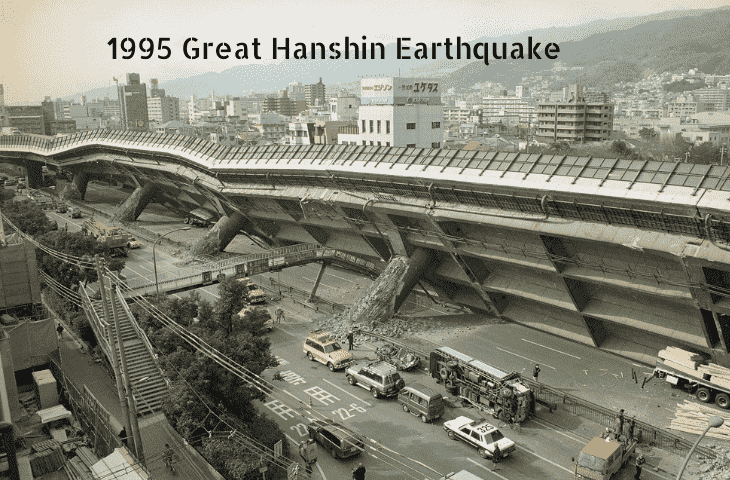
In 1995, Kobe awoke to a terrifying earthquake that collapsed numerous buildings and claimed over 6,400 lives. The community rallied to support one another during this crisis, showcasing the bravery and strength of the people in Japan.
Also Read:- Top 10 Most Expensive Phones 2024
1896 Sanriku Tsunami
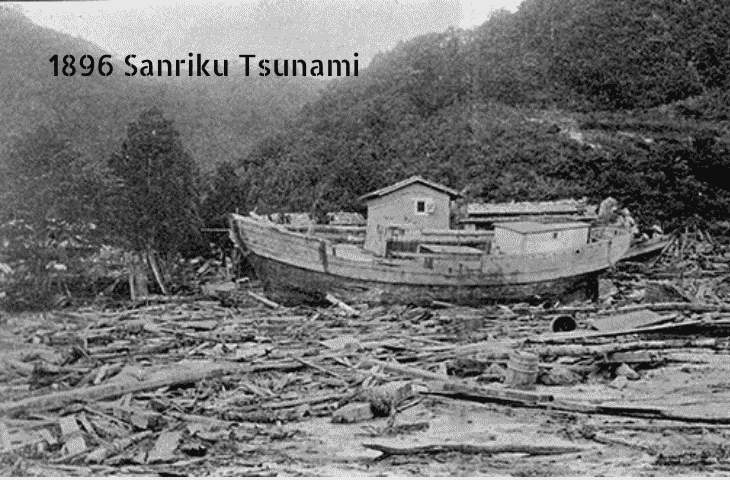
In 1896, a massive tsunami struck without warning, devastating coastal villages and resulting in the loss of 22,000 lives. This tragedy illustrates how quickly the sea can become perilous.
1933 Sanriku Tsunami
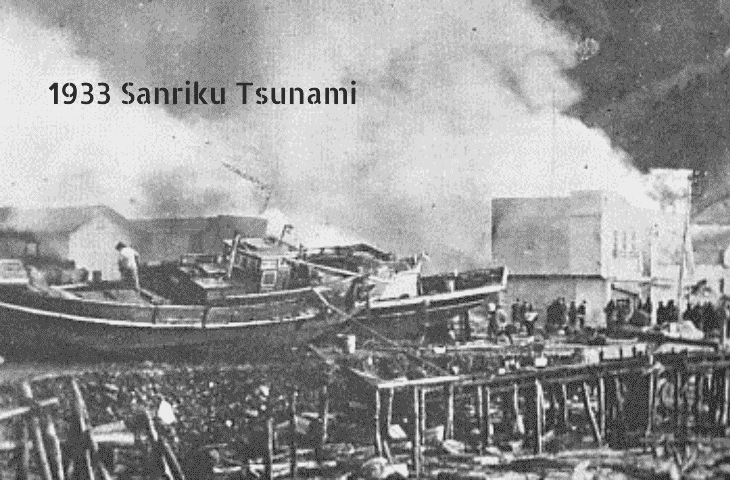
The sea struck again in 1933, in the same region, taking around 3,000 lives. It was as if the ocean wanted to remind everyone of its formidable power.
Read More: Top 10 Most Dangerous Weapons Ever Created
Mount Unzen Eruption and Tsunami (1792)
In 1792, Mount Unzen erupted, causing a landslide that generated a tsunami. This double calamity resulted in approximately 15,000 deaths, highlighting the destructive potential of both land and sea.
Mount Bandai Eruption (1888)
When Mount Bandai erupted in 1888, it transformed the landscape of Fukushima and claimed about 477 lives. This event had a profound impact on the local population. #FukushimaDisaster
Typhoon Ida (1958)
In 1958, Typhoon Ida struck the Kantō region with fierce winds and heavy rainfall, leading to floods and landslides that resulted in 1,269 fatalities. This disaster served as a stark reminder of the dangers posed by powerful storms. #TyphoonHagibis
Also Read:- Top 10 Fastest Motorcycles In The World?
Tōnankai Earthquake (1944)
During wartime in 1944, the ocean floor shook south of Japan, resulting in a significant earthquake that took over 1,000 lives. This disaster served as a reminder that nature can be just as terrifying as human conflicts.
Hōei Earthquake (1707)
In 1707, a powerful earthquake struck Honshu, Japan’s main island, causing extensive destruction and claiming the lives of up to 20,000 people. It serves as a reminder of the longstanding impact of nature’s forces throughout Japan’s history.
World’s Top 10 Deadliest Natural Disasters
Throughout history, the world has witnessed numerous devastating natural disasters. From the 1556 Shaanxi earthquake in China to the 2004 Indian Ocean tsunami, these catastrophic events have led to tremendous loss of life and destruction.
What Natural Disasters Are Common in Japan?
Due to its location along the Pacific “Ring of Fire,” Japan is susceptible to various natural disasters, including earthquakes, tsunamis, typhoons, and volcanic eruptions.
Worst Disaster in Japan
The 2011 Tōhoku earthquake and tsunami is regarded as the most catastrophic disaster in Japan’s recent history, resulting in over 15,000 deaths and triggering the Fukushima nuclear crisis.
Worst Natural Disaster in Japan’s History
Historically, the 1923 Great Kantō earthquake ranks among Japan’s deadliest disasters, with over 100,000 fatalities caused by both its immediate effects and the subsequent fires. #JapanHistory
List of Natural Disasters in Japan
Japan has encountered numerous natural disasters throughout its history, including the 1995 Kobe earthquake, the 2004 Chūetsu earthquake, the 2016 Kumamoto earthquakes, and annual typhoons, each leaving a lasting impact on the country’s history and landscape.
Overview – Top 10 Deadliest Natural Disasters in Japan
Japan, renowned for its stunning scenery and vibrant culture, occasionally faces the harsh realities of nature through earthquakes, tsunamis, volcanic eruptions, and severe storms. From the monumental earthquake that rocked Tokyo and Yokohama in 1923 to the catastrophic tsunami that struck Tōhoku in 2011, as well as the eruption of Mount Unzen in 1792, Japan has endured significant natural disasters. These catastrophic events have claimed countless lives and transformed many more, highlighting the resilience and solidarity of the Japanese people. Each disaster not only brought challenges but also showcased stories of mutual support, recovery, and enhanced preparedness for future events. Japan’s experience with these natural calamities serves as a powerful reminder of nature’s might and the enduring strength of the human spirit.
Top 10 Deadliest Natural Disasters in Japan – FAQs
What is the most lethal disaster in Japan’s history?
The 1923 Great Kantō earthquake is frequently regarded as the most lethal disaster in Japan’s history, resulting in widespread destruction and a tremendous loss of life.
What types of natural disasters are common in Japan?
Japan regularly faces earthquakes, volcanic eruptions, tsunamis, and typhoons, largely due to its position along the Pacific “Ring of Fire.”
Can you mention a devastating tsunami that struck Japan?
The 2011 Tōhoku earthquake and tsunami is one of the most catastrophic natural disasters in recent history, causing extensive casualties and triggering the Fukushima nuclear disaster.
Has Japan faced deadly volcanic eruptions?
Yes, the eruption of Mount Unzen in 1792 was among the deadliest volcanic disasters in Japan, resulting in a megatsunami that claimed thousands of lives.
What was a significant flood disaster in Japan?
The Nagasaki floods of 1982 are remembered as one of the deadliest flooding events in Japan, leading to substantial damage and loss of life.
How does Japan address natural disaster risks?
Japan has established sophisticated early warning systems, stringent building regulations, and comprehensive disaster education programs to minimize the impact of natural disasters.
What was the deadliest natural disaster in Japan’s history?
The deadliest natural disaster in Japan’s history was the Great Kantō Earthquake in 1923, which struck the Tokyo and Yokohama area, resulting in over 105,000 deaths due to the initial quake, ensuing fires, and widespread chaos.
How frequently do earthquakes occur in Japan?
Earthquakes are a common occurrence in Japan due to its location on the Pacific “Ring of Fire,” where several tectonic plates converge. While many are minor and barely noticeable, significant quakes capable of causing damage happen less frequently but are an ongoing aspect of life in Japan.
What makes tsunamis particularly deadly in Japan?
Tsunamis pose a significant threat in Japan due to its extensive coastline and proximity to underwater earthquake zones. Underwater quakes can quickly generate large tsunamis that strike the coast with little warning, as demonstrated by the 2011 Tōhoku earthquake and tsunami.
Has Japan enhanced its disaster response since the 2011 Tōhoku earthquake?
Yes, Japan has made considerable advancements in disaster response and preparedness since the 2011 Tōhoku earthquake, including improvements to early warning systems, stronger coastal defenses, and regular disaster drills for communities and emergency services.
What measures does Japan implement to safeguard against natural disasters?
Japan utilizes various strategies to protect itself from natural disasters, such as enforcing strict building codes for earthquake resistance, constructing extensive sea walls and tsunami evacuation facilities to lessen tsunami impacts, employing advanced meteorological technology for early warnings, and providing ongoing public education on disaster preparedness.


